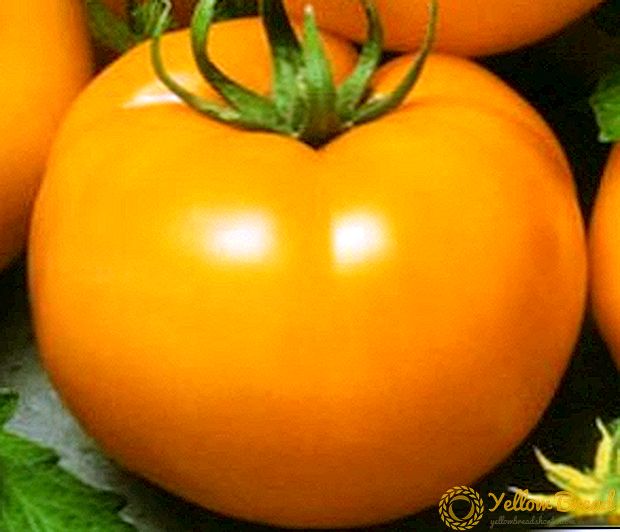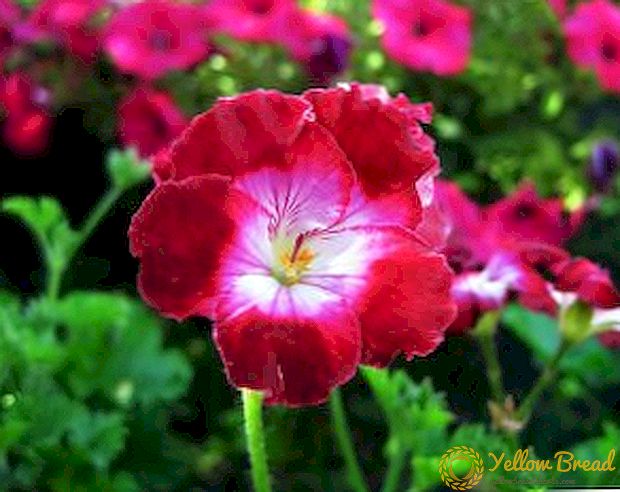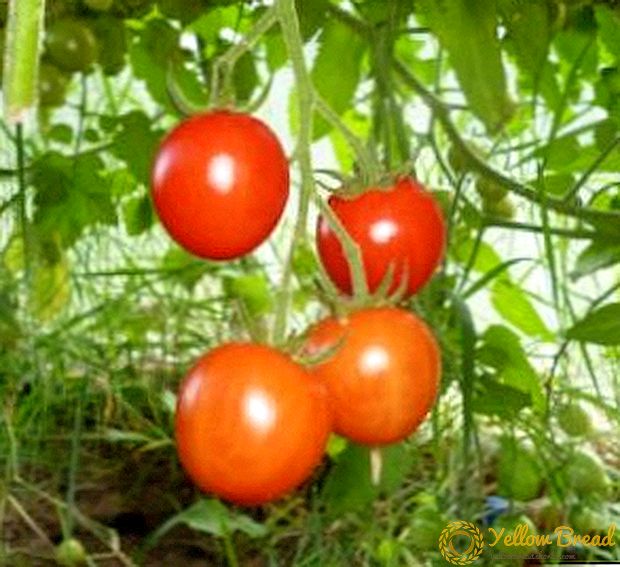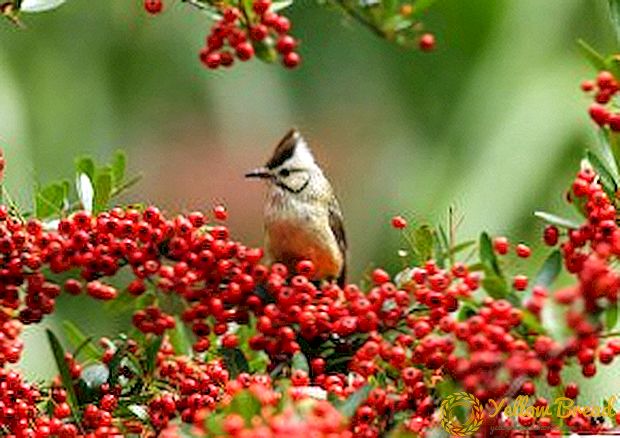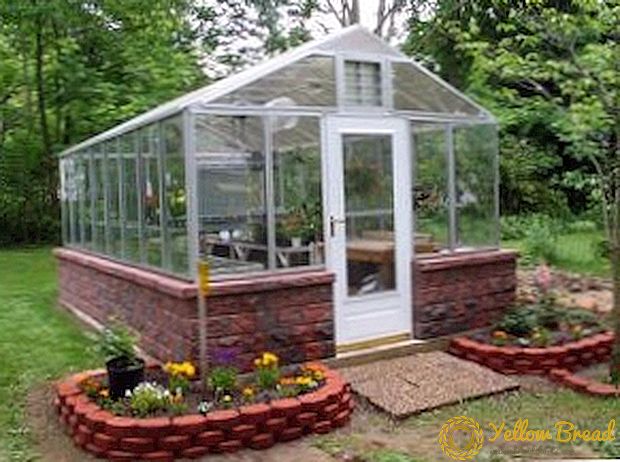 Roses - decoration of any garden from June to October. To protect their beauty from frost, you need to know the features of caring for roses in the fall and preparing for winter. Assistance in wintering is especially needed varieties of roses, bred recently and flowering continuously all summer. Varieties that bloom once, have time to adapt to the change of season.
Roses - decoration of any garden from June to October. To protect their beauty from frost, you need to know the features of caring for roses in the fall and preparing for winter. Assistance in wintering is especially needed varieties of roses, bred recently and flowering continuously all summer. Varieties that bloom once, have time to adapt to the change of season.
- How to slow down the growing season
- Watering reduction
- Fertilizer change
- Abstain from trimming
- How to prepare roses for winter
- Weeding
- Copper Oxide Treatment
- Hilling flowers
- Trimming for the winter
- How to cover roses
- Using air-dry shelter to preserve
How to slow down the growing season
For a successful wintering, the plant must accumulate nutrients in the fall and go into a state of rest.  A decrease in temperature and a decrease in daylight hours will signal a winter approaching for the rose, and changes in autumn care and preparation for winter will help rebuild biological processes. August - the month in which the preparation of roses for the winter season begins.
A decrease in temperature and a decrease in daylight hours will signal a winter approaching for the rose, and changes in autumn care and preparation for winter will help rebuild biological processes. August - the month in which the preparation of roses for the winter season begins.
Watering reduction
In August, reduce the amount of water, and from the beginning of September, watering roses stopped. If the weather is very hot and arid, the cessation of watering is transferred to the end of the month.
In general, dry land is more suitable for hibernating roses than saturated with moisture.
Fertilizer change
Since August, they stop making nitrogen fertilizers that help abundant flowering, instead they make root dressing with potash-phosphorus additives. This is another important nuance in how to care for roses in the fall.
During this period, it is recommended to conduct 2 dressings.
For the first in 10 liters of water dissolve:
- boric acid - 2, 5 g (can be replaced by brown - 3.5 g);
- potassium sulfate - 10 g;
- superphosphate - 25 g.
 After a month, you can make a similar nutrient solution:
After a month, you can make a similar nutrient solution:- water - 10 liters,
- superphosphate and potassium sulfate - 15 and 16 g, respectively.
Abstain from trimming
In mid-September, cutting off faded buds is stopped. At the same time unopened buds that are smaller than a pea in size are torn off. The remaining buds are allowed to ripen and form seeds.
How to prepare roses for winter
It is important to help the plant gradually go to rest and create conditions for protection against severe frosts, pests and diseases. At the same time, it is better to check all the preparatory procedures with the weather forecast, since in different years the seasonal cooling occurs in different periods.
Weeding
Loosening the soil is stopped in September. Otherwise, the shoots that are in the resting stage may begin to actively develop. 
Copper Oxide Treatment
Treatment with a fungicide is carried out before hilling, in dry, warm weather, following all precautions. Previously, at a height of 40-50 cm, all the leaves are removed from the plant.
Copper oxychloride is sprayed to disinfect the bark and prevent many shrub diseases. The most famous of them are scab and powdery mildew.
Hilling flowers
Shrubs pile up before the first frost, since the movement of the juices in the plant has not stopped yet and the stem can crack from the frost.A hill with a height of 30-40 cm is piled around the stem. The hilling mixture must be dry, it consists of ground with the addition of sand, sawdust, and before hilling the ground around the root can be lightly dusted with ashes.
Trimming for the winter
Pruning and removal of leaves carried out in late October.
Processing of roses in the fall before shelter for the winter combines 2 types of pruning:
- Sanitary - cutting off the leaves and pruning of winter-dying parts of the plant.
- Pruning to form a crown of shrubs.
 Sanitary pruning is performed on all varieties, which will avoid:
Sanitary pruning is performed on all varieties, which will avoid:- evaporation of moisture from the leaves, which depletes the plants and increases the humidity inside the shelter;
- their rotting on the bush in the shelter and infection of the rot of the whole plant.
Formative pruning is carried out depending on the variety and is divided into 3 types:
- Short pruning - leave shoots with a pair of buds. Perform this type of pruning infrequently. Cascade shtambovye species are shortly cut only in the first year, the length of the shoots after such pruning is 15-18 cm.
- Medium - 35-40 cm, 5-6 buds are left; they are performed on hybrid tea, polyanthus and floribunda roses, grandiflora, and remontant varieties.
- Long pruning - leave no less than 10 buds, slightly shortening the shoot. Apply to old English, shrubby and climbing roses.
Shoots climbing roses cut to 30% of the length, except for small-color species, which pinch the point of growth. Climbing varieties bloom on last year's shoots, because of this they can not be too pruned. Only the old perennial shoots are shortened to 30 cm, to stimulate the growth of young stems.
Weak, not mature and sick shoots are completely cut off.
3-5 mature escapes are left trying to observe symmetry and such principles:
- Pruning is carried out in dry and clear weather.
- For thick stems, use a hacksaw to prevent the wood from cracking.
- Cuts perform at an angle for dripping moisture.
- The cut core must be white.
- The cut is made above the swollen buds 5 mm higher, so that the shoots growing from them do not overlap in the future.
- After finishing pruning, remove all the leaves, carefully walking along the stalk from the bottom up with a thick gloved hand.
How to cover roses
To create an air-dry shelter of roses for the winter you need:
- frame;
- covering material.
 Cover material can be:
Cover material can be:- Plastic film - it is durable, but you need to leave the ventilation holes, as under it the roses can melt.
- Sacking, thick rags, old jackets and coats - these materials are cheap, but not very convenient.
- Agrofibres, spanbond, lutrasil - this is a special synthetic material, it is good for passing moisture and air, you can buy any necessary footage, will last several seasons, are convenient to use.
Also, roses for the winter are wrapped with sacking or thick paper and shelter without frame:
- dry leaves;
- lapnik;
- sawdust.
This method is suitable for low bushes and cold-resistant varieties.
Using air-dry shelter to preserve
In the shelter of roses exposed to 2 hazards:
- Rodents - for the prevention in the tunnels are spreading the poison from rodents.
- Vypryanie - without access to air and at high humidity shoots choking and they are affected by pathogens.
For this reason, roses are directly covered, having sustained them for 2 weeks at an air temperature of less than 2-5 ° C below 0. This also will not allow rodents to start in shelters.
The stems of roses gently bend down to the ground and laid on the material spread below. If necessary, the stems pin to the ground with metal brackets. The base of the stem should be well spud.
A covering material is laid over the frame. Agrofibre, spanbond, lutrasil fold in 2-3 layers. Applying polyethylene, leave holes for air. The material is pressed to the ground with boards and bricks.
If dry snow falls, you can pour it over the cover for additional insulation.

